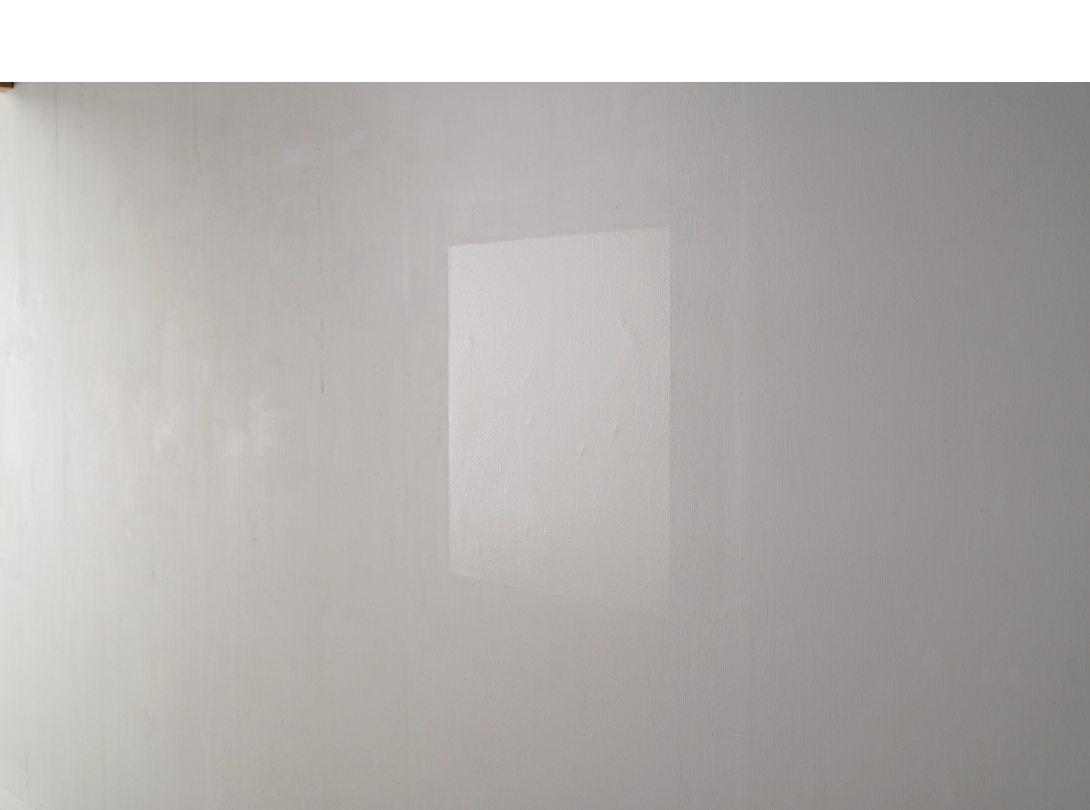1992—
Sacrificial Corrotion
Perfumed oil
Parfumiste: Sumire Miyazaki
This work uses fragrance. A uniquely formulated fragrant oil was applied to the walls. The ingredients in this fragrant oil were controlled to have a yellowish tint.
Fragrance is one of the fastest-disappearing elements among many forms of expression.
This work assumes that the yellowing, which will appear on the surface sometime after the fragrance has completely dissipated, is its trace, but it is only a substitute for the fragrance.
What does it mean to "remaining" a fragrance (which is everything, including the unintended)? This is, in fact, the problem of everything related to physical materials.
Ingredients memo
Linseed oil
Vegetable dry oil extracted from flax seeds. It is widely used for oil paintings, and has excellent adherence and film strength. It has a yellowish tint. Its aroma is that of oil, but when mixed well with spicy scents, it mellows out the whole composition.
Frankincense
Frankincense is made from the resin extracted from trees of the Boswellia genus of the family Alangiaceae. Also known as frankincense. It has strong antibacterial properties. Known as the celebratory gift offered by the Three Doctors of the East to the feet of babies at the time of Christ's birth. Refreshing, slightly sweet aroma.
Myrrh
Myrrh is made from the resin extracted from trees of the genus Commiphora of the family Alangiaceae. Also known as "myrrh. Has bactericidal properties. Some people believe that myrrh is the origin of the word "mummy" because myrrh was soaked in flax cloth and used to embalm corpses in the past. One of the oldest perfumes.
It has a spicy, slightly bitter, and well-defined aroma.
Cedarwood
Cedarwood is made from chips cut from the trunks of Himalayan cedars. The wood was often used for furniture and building materials because of its insect repellent properties and fragrance.
The essential oil has a noticeable fragrance with a hint of vegetal greenness.
Patchouli
Patchouli is made from the fermented and dried leaves of the Perilla frutescens plant.
In addition to its use as a perfume because of its insect repellent effect, in 19th century England, dried patchouli leaves were used in wardrobes for storing linens.
It has a very strong lingering fragrance, similar to that of India ink.
Benzoin
Made from the resin extracted from the anthocyanin tree. Also known as "benzoin.
In Armenia at the end of the 19th century, there are records of people burning benzoin to disinfect their houses while giving them a pleasant aroma.
It has a spicy aroma with a vanilla-like nuance.
Gaillac Wood
Made from the resin and sawdust of a tree belonging to the family Pinaceae.
It has antioxidant properties. The tree was used as a remedy for syphilis and tuberculosis until the 1930s, as well as for arthritis.
It has a rose-like aroma with a subtle burnt smell.
Clove
Made from the flower buds of the butterfly bush. Also known as "Ding" or "Dingzhi" or "Hyakuriko".
It is known for its insecticide and deodorant properties. It is well known for its use as a spice, but in some regions, such as Indonesia, it is also used as a tobacco. In Japan, clove cigarettes are available under the brand name "garam".
It has a clean aroma like toothpaste or gargle.

